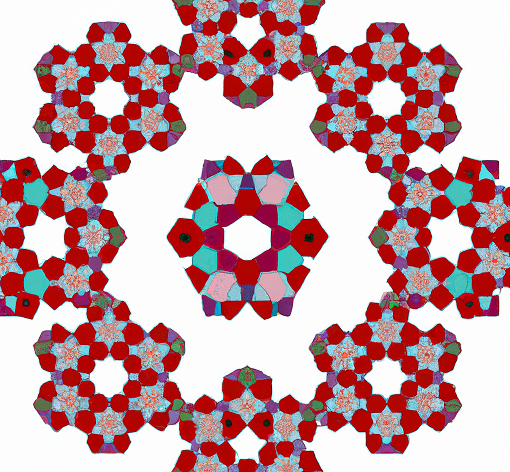Recently, scientists have discovered a third natural source of quasicrystals at the Sand Hills of north central Nebraska, USA.
Quasicrystals and their unique properties:
Have you ever wondered why some crystals have perfectly symmetrical shapes and patterns, while others look like a jumbled mess? The answer lies in their atomic structure. Most crystals have a repeating pattern of atoms, known as a lattice, that gives them their regular shape. But there's a rare type of crystal that breaks this rule, called a quasicrystal.
Quasicrystals were first discovered in 1982 by the Israeli mathematician and crystallographer, Dan Shechtman. At first, he was met with skepticism by the scientific community, who believed that such a crystal structure was impossible. But Shechtman persisted and eventually won the Nobel Prize in Chemistry in 2011 for his discovery.
What makes quasicrystals so unique is that they have a non-repeating pattern that never quite repeats itself, known as a Penrose pattern. This gives them a strange, yet beautiful appearance, with sharp edges and intricate shapes that seem to defy the laws of geometry.
Unlike regular crystals, which have a fixed number of symmetries, quasicrystals have infinite symmetries. This means that no matter how many times you rotate or reflect a quasicrystal, it will always look the same. This property is known as "quasiperiodicity," and it's what makes quasicrystals so fascinating to scientists and mathematicians.
Quasicrystals are not just aesthetically pleasing, but they also have unique physical properties. They are extremely hard and can resist corrosion and wear, making them ideal for use in coatings and industrial applications. They also have low friction, which makes them useful in bearings and other moving parts.
Researchers are still trying to uncover the full potential of quasicrystals and their applications in various fields, from electronics to medicine. They are also studying the natural occurrence of quasicrystals in minerals, such as the mineral called icosahedrite, which was discovered in Russia in 1992.
Quasicrystals are a fascinating and mysterious world of non-repeating patterns that defy the traditional rules of crystallography. With their unique physical properties and infinite symmetries, they have the potential to revolutionize many areas of science and technology. And who knows, maybe one day we'll even discover new quasicrystals that are even more bizarre and beautiful than we could ever imagine.


